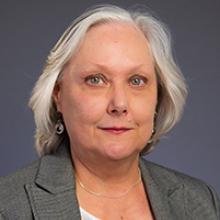Checking in on Project Talent with AIR Vice President Susan Lapham
 Project Talent is the largest, most comprehensive study of high school students ever conducted in the United States. Launched in 1960, it sought to better understand the talents and career paths of a broad cross-section of American students. The study involved a series of tests and questionnaires on aptitudes, abilities, interests, and family characteristics, with follow-up data collection over the next 20 years.
Project Talent is the largest, most comprehensive study of high school students ever conducted in the United States. Launched in 1960, it sought to better understand the talents and career paths of a broad cross-section of American students. The study involved a series of tests and questionnaires on aptitudes, abilities, interests, and family characteristics, with follow-up data collection over the next 20 years.
Recently, researchers have resumed data collection with the original Project Talent participants, providing a wealth of information in a variety of topics, including aging. Now, as the participants have reached their seventies, Project Talent data are helping AIR researchers study possible risk and protective factors of Alzheimer’s disease and related dementias.
Project Talent Director and AIR Vice President Susan Lapham answered a few questions about the project, its history, and its potential influence.
Q: Project Talent has provided many interesting insights into human life for nearly 60 years. What is the latest iteration of Project Talent studying?
- Started by AIR founder John Flanagan, originally funded by the U.S. Department of Education and now funded by the National Institutes of Health, and the longest-running project at AIR
- Includes data on 377,000 individuals who attended 1,353 high schools across the U.S. in the 1960s
- Worked to create a national inventory of human resources and talent, understand how young people chose careers, and determine what most influenced students as they planned for their futures
- Has also examined wage differences by gender, post-traumatic stress after combat duty, and the economic consequences of adolescent childbearing
Lapham: The current study examines aging and aims to understand why some people develop Alzheimer’s or dementia while others don’t. School quality and education in early life may serve as a protective factor against Alzheimer’s or dementia by promoting cognitive resilience, and by comparing Project Talent participants who attended the same high schools, researchers will be able to estimate just how much school quality affects cognition and health in later life.
The diversity of the Project Talent cohort also gives us the opportunity to examine the high rate of Alzheimer’s or dementia among African Americans and Hispanics compared to their nonminority peers. The study has 5,000 twin participants—it’s the only nationally representative study of twins in the U.S.—and this allows us to collect DNA and control for genetics in identical twins. From there, we can study the impact of environment, family, and life on Alzheimer’s and dementia. And we’re studying histories of trauma, including discrimination, from very early ages to analyze how trauma can affect cognition.
Over 5 million Americans are living with Alzheimer’s or dementia, and in most cases the causes are unclear. Understanding what puts individuals at risk for and what protects them from developing Alzheimer’s or dementia can help us develop policies and interventions to improve lifelong brain health.
Q: What has been the biggest challenge for Project Talent?
Lapham: Finding our participants! Since Project Talent last updated contact information in 1978, it has been a long time since they’ve heard from AIR. One of the most interesting ways we’ve found people has been through their 50th high school reunions that took place from 2010-2013. During that time, we attended over 700 of these reunions to talk about the project, reengage our participants, talk about what was on their mind, and ask if they would participate in new studies.
Q: How long to do you see Project Talent lasting? Will it end with the generation you’re currently studying?
Lapham: We hope it’ll continue for decades. It has the potential to become one of the most important life course studies ever conducted.
We plan to study our original participants as they continue to age, but we’ve also begun to include their children and grandchildren—when given permission, of course—in new studies. For example, we’re currently collaborating with autism researchers to examine autism across generations and look for a genetic marker. We’re also hoping to examine census data to look at the life circumstances, such as socioeconomic status, of participants’ ancestors.
Q: What do you hope this project will accomplish down the road?
Lapham: In addition to providing the research community with a rich repository of longitudinal data stretching from adolescence through old age, my personal hope is that Project Talent does for Alzheimer’s disease and related dementia what the Framingham Heart Study did for heart disease. By studying multiple generations over the course of many years, the Framingham study identified common factors or characteristics that contribute to cardiovascular disease and has had critical significance on cardiovascular health.
Once we finish collecting the current data and are able to identify some of those common factors in their early lives, we can hopefully discover what people can be doing as teenagers—or even earlier—to help ensure their brains stay elastic.
We’ll continue to identify risk and protective factors for different economic, health, cognitive, and psychological outcomes at older ages—and hopefully impact health policy, funding priorities, and ultimately develop remedies and preventive measures to address age-related and cross-generational conditions. We envision endless potential for this project.
While Project Talent was originally intended to be a longitudinal study, I don’t think Dr. Flanagan was planning on it lasting quite this long. But, as one of his sons recently told me, Dr. Flanagan would be proud that the study lives on and extremely interested in what we're hoping to learn about dementia.

